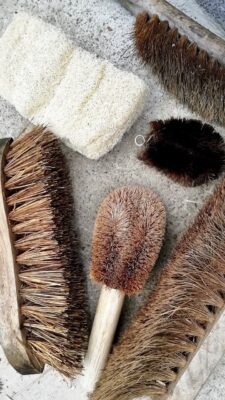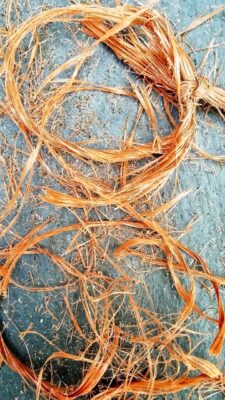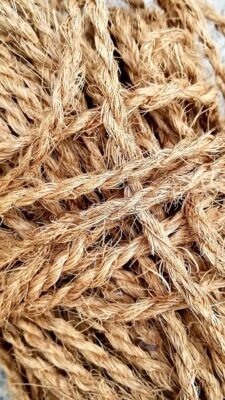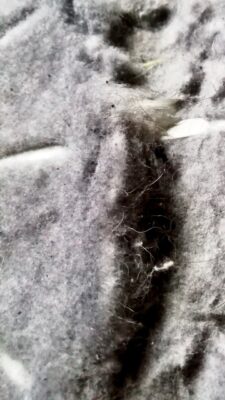Microplastic pollution is one of the most insidious impacts of modern living – and, yes, gardening – but natural pollution-busting solutions abound.
One of the great joys of living in the foothills of Eryri – or Snowdonia – National Park is that I get to walk among the clouds.
I’m at a low enough altitude not to be actually gardening among them, except when the weather drags them down over our hills, shrouding us in what makes the Celtic rainforest tick. But a two-hour walk (or five-minute drive), during mild, damp and windy weather, and I can be lost in the swirling white stuff, hair glistening with minuscule orbs of mist.

You might imagine such cloud-bathing to be among the purest of pursuits; it’s certainly somewhere to disappear to for a while when your head’s spinning. But on returning from a recent lost-in-the-clouds session, I was soon back in a spin on learning that clouds – those great, restless rain-, snow- and shade-making climate regulators – are less pure than I thought.
Chinese scientists who study clouds – what a job! – have discovered that they, like almost every other part of our natural world, are tainted by microplastic pollution. We already know that microplastics are found from the tops of mountains to the deep ocean trenches, and are in our air, water, food, soil and even our blood, but in clouds?
Microplastics are fragments 5mm or less in diameter. On beaches we see them as coloured specks among the sand. These indestructible particles are commonly polystyrene, polyethylene or polypropylene, all synthetic, human-made plastics. They break up into ever tinier bits, becoming nanoplastics too small to be seen by the naked eye.
Researchers are not sure of the origins of cloud-dwelling microplastics, but those found in cloud water are thought to be carried into the air from our oceans, which themselves are heavily contaminated by plastic debris, both macro and micro. These tiny – often too small to be visible – cloud-borne bits, which have been broken down and down in sunlight from bigger bits, also contain other pollutants, such as lead and mercury.
The cloud-sampling scientists also found that clouds themselves can modify microplastics, and that this might have a knock-on effect on cloud formation itself; clouds affect local weather patterns, but also influence temperatures globally.

There was nothing I could do with this knowledge – apart from escaping back into the clouds – other than launching a how-green-is-my-garden-and-greenhouse audit. My garden’s core ethos is that it should give more than it takes from nature; that my efforts should enrich, beautify and, increasingly, help heal our natural world. The notion that any aspect of the gentle act of gardening would harm our world mortifies me.
Yet the garden industry, plus a number of famous horticultural faces, carry on flogging and using plastic, seemingly without a care in the world. None of us can escape the necessity of certain plastics in one form or another, but as gardeners we should be doing all we can to help clean up our clouds (and everything else). The good news on microplastics and gardening is that there’s already a whole heap we can do – if we let plants give us a pollution-busting hand.
My emergency audit threw up some microplastic-beating solutions so familiar to my everyday activities that I’d forgotten how benign they are. I banished plastics from simple everyday tools such as hand brushes and brooms long ago. When we use tools, they gradually wear out. When the bristles of brushes become worn, it’s because bits of the material they’re made from have broken off and dispersed.
If a brush is made of plastic, those lost bits of bristle are on their way to becoming microplastics. But if it’s made of, say, coir, or another natural, plant-derived fibre, the shed bits don’t persist in nature for decades or even centuries. They do what every living thing in nature eventually does – they rot away: decayed, gone, back into the cycle of life. There is no residue, and no polluted air, water or clouds; no harm, known or still to come.
Some overlooked, fraying red baler twine sent my spirits plummeting. Many of the plastics we use in our gardens, like plastic twine, whether bought new or reused, have only a brief life until they begin to disintegrate. If they’re faded and crumbling, they’re seeding microplastics into our world.

I carefully wrapped the twine in newspaper and binned it, reminding myself that I’ve actually replaced all plastic ties, twine/string and supports with plant-derived, renewable and rottable alternatives that do as good or even a better job than their non-renewable, oil-based counterparts. The only bin they’ll end up in is a compost bin.
Plant-derived twine/string and ties made from coir, cotton, hemp, jute, raffia and sisal can be used for a multitude of garden jobs, from tying in shoots to bundling up sticks and poles. I recently discovered a tough cord made of coir fibre, which is so strong I’ve used it to strap up some storm-loosened fencing. If it can’t be reused later, it’ll be devoured by compost worms. Any bits of these plant fibres that I drop around the garden soon rot into the soil – if they’re not woven into the local blackbird’s nest first. Either way, no harm’s done.
Another strong and useful natural twine, made from sheep’s wool, is available in different thicknesses and colours. It’s perfect for tying in greenhouse crops such as tomatoes, and is compostable. And you can easily grow your own microplastic-free plant ties. The narrow, fibrous leaves of both New Zealand flax (Phormium) and cabbage palm (Cordyline australis) can be cut and slit into tough, bespoke ties suited to any job.

One overlooked source of gardening microplastics is ourselves – or rather the gear we wear. The clothing we’re most comfortable in is often made of synthetic fibres such as polyester. Take your favourite, warm, lightweight fleece (often made from recycled plastic bottles). Every time you shake it and/or wash and dry it, it’s shedding microfibres (a type of microplastic that forms lint on tumble dryer filters) into both our waterways (via our drains and sewage treatment plants) and the air. If, like me, you can’t part with a favourite fleece, washing it as rarely as possible curbs its polluting output (confession: I’ve stopped washing mine).
Plants come to our rescue here too. Clothing made of 100% cotton, linen or hemp won’t shed microplastics when you’re in your garden or greenhouse, nor will clothing made from pure wool. Charity shops are goldmines for pre-loved, oversized, dead comfy and plastic-free gardening gear at bargain prices. All of the tiny bits lost from this clothing, as it wears out, will rot harmlessly away.
Gardening’s contribution to pushing back the tide of insidious, planet-wide microplastic pollution might feel inconsequential – but never forget that there are millions of us gardeners. The changes we can all make are straightforward and low-cost – and they certainly won’t cost us the earth.
The audit’s over, and my patch didn’t fare too badly. It’s time to celebrate – with a walk in the clouds.
Text and images © John Walker
Find John on X (formerly Twitter) @earthFgardener










